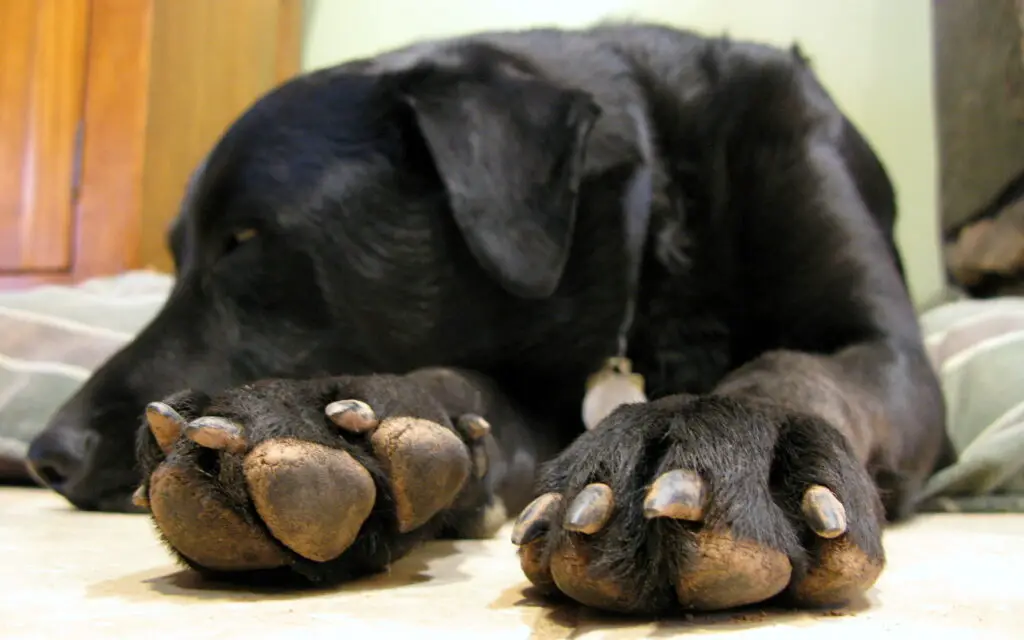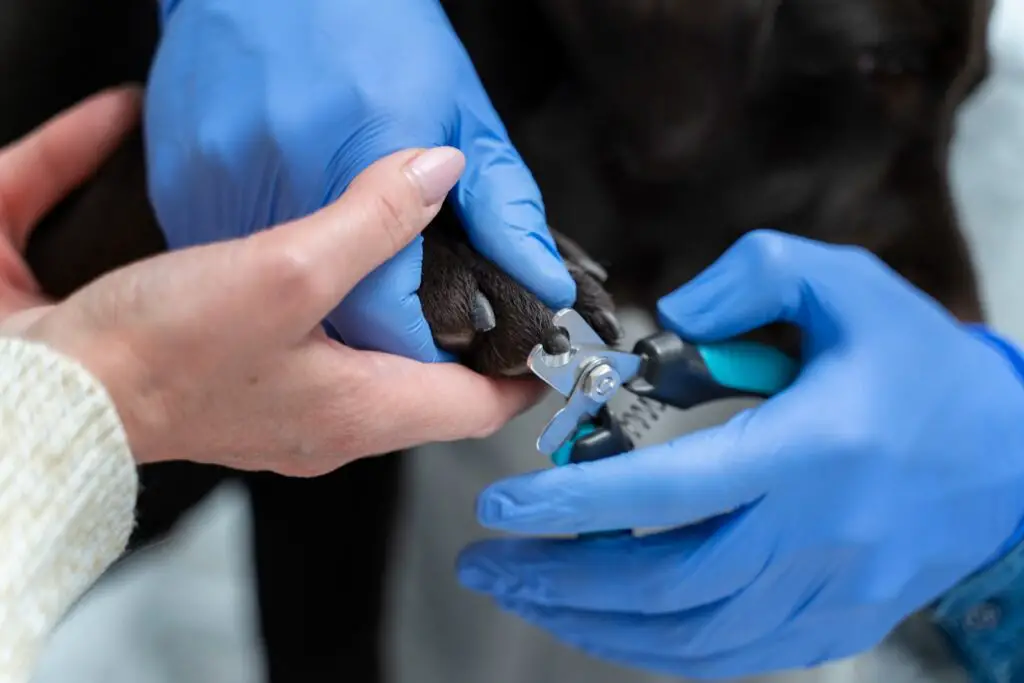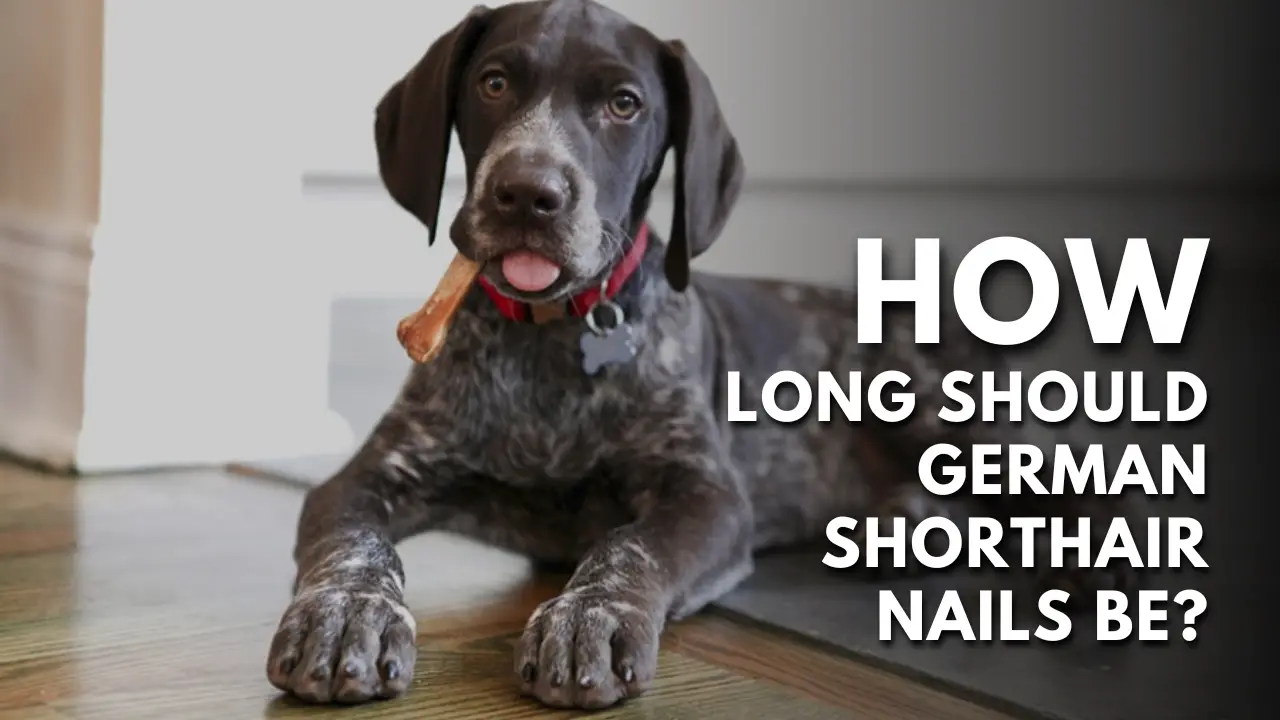Keeping your German Shorthaired Pointer’s nails trimmed is important for their health, safety, and comfort. Long nails can cause discomfort when walking and running, an irregular gait, and injuries.
The general rule of thumb is to wait until you hear their nails clicking on hard floors or surfaces. This is a telltale sign that it is time to get your dog’s nails clipped.
In this article, we will uncover how to trim a GSP’s nails, ensure your dog feels comfortable during the process, and much more. Let’s begin!
How Often Do You Need To Cut Your GSP’s Nails?
The frequency of nail trims depends on the growth rate of your dog’s nails. It varies from dog to dog and depends on multiple factors, like diet and exercise.
A German Shorthaired Pointer is bred as a hunting dog, and it is in their nature to be extremely active. So, GSPs who walk on pavement and sidewalks regularly will wear out their nails naturally and require less nail care.
Usually, they should have their nails trimmed every six to eight weeks.
You can do it yourself, but it should be done with great focus, and you should be careful not to cut the quick, which is the blood vessel within the nail. If you have never cut their nails before, it is best to take them to the vet or a dog groomer for nail clipping.
How To Make Sure Your Dog Is Comfortable With Nail Trims?
Some GSPs show defensive or aggressive behavior when they see their human heading toward them with a nail clipper. Some common signs of distress in your dog are panting, trembling, snarling, growling, cowering, etc.

This is why it is crucial to desensitize them to nail trimmings at a young age, or they will likely remain afraid. You cannot force your dog to submit to getting its nails cut, either. Be patient and gradually introduce nail clipping to its routine.
Some dogs don’t like to have their feet touched. In such a case, start by giving your pet foot massages at a young age.
Here are a few more tips to make your dog’s nail cutting easier and more comfortable:
- Give your pup lots of treats and positive reinforcement when cutting its nails. Your dog will be more cooperative if it associates nail trimming with getting treats!
- Make sure to cut its nails right after bathing it because the nails will be much softer and tender and will require less force to be cut.
- Clip the nails at mealtime because the dog will be too focused on the food than the fact that you are cutting its nails.
- It is well-known that GSPs love to indulge in excessive physical activity. Take your GSP for a long run to tire it, so it feels too exhausted to resist nail trimming.
- Nail trimming can become a two-person job because dogs can get extra fidgety at the sight of nail clippers. Have someone your dog trusts hold it down while you clip its nails.
If none of the above methods work, take your dog to the vet or a professional groomer. If you still don’t have any luck, make an appointment with a professional dog trainer or a Certified Applied Animal Behaviorist to uncover the underlying behavioral issues.
How To Cut Their Nails?
A GSP needs a nail trim every few weeks, and if you want to learn to do it yourself, you have come to the right place.
We will discuss the technique of trimming nails at home in the following steps:
Step 1: Use the Right Nail Trimming Tools
There are two kinds of nail clippers you can choose from, scissors and a guillotine.
The guillotine clippers require less force, which makes them easier to handle for people with arthritis. The scissor clippers, on the other hand, have a squeezable handle that requires more force, but it is better for cutting thicker nails in large breed dogs.
You can also use a nail grinding tool to trim the nail properly. It is a great electric tool that sands the nail and is easy to control, but it takes more time than clippers.
Step 2: Don’t Be Nervous
It is important to be patient and relaxed when you are cutting your dog’s nails. Take your time and get comfortable because your dog can feed off your nervous energy and become more anxious or defensive. It will be difficult to clip the nails if it starts acting jittery.
In many cases, clipping their dog’s nails is stressful for both the dogs and the dog owners, but remember, if you feel comfortable, your dog will too!
Step 3: Start To Cut Small Bits at a Time
Position the clipper at the bottom edge of the nail and insert only the tip through the clipper’s opening. Do not cut the nail from side to side; cut it from top to bottom at a perpendicular angle.
Always cut small slivers of the nail rather than a large chunk. You can always go back and cut the nail once it grows out a little, but if you accidentally cut the quick and cause pain, it will be a huge setback for your dog, and it will be too scared to get its nails cut in the future.
After you make the first cut, inspect the nail, and if you feel you can take off more, go ahead and take another thin slice off until the quick is exposed.

Step 4: Stop Cutting As You Near the Quick
While trimming your dog’s nails, make sure you stop at the end of the quick.
German Shorthaired Pointers have some or all black nails, which makes it difficult to spot them quickly. The pinkish quick in the nail is easily visible in clear nails. But black nails make it harder to cut their nails.
After you have had some practice and experience, you will be able to tell by feeling when you are near the quick.
Another tip we can share with you is that as you cut the nail, you will see a light spot on the nail, which is the endpoint of the quick. When you touch it with your finger, you will feel soft tissue.
The hard shell you removed is dead, and removing it will reveal the quick. If you accidentally cut the quick, the nail will start to bleed. To stop the bleeding, cover the wound with cornstarch or styptic powder.
Apply pressure as you press into the powder. If the bleeding does not stop in a few minutes, take your dog to the vet and get it checked for clotting disorders.
Step 5: Shape the Nail
When you can see or feel the blood with your finger, it is your sign to stop. Now, for the final touches, shape the nail a bit by cutting the edges off at the same angle as the curvature of the nail.
You can also use an emery board to smooth the rough edges. Once the nail is smooth, it will not scratch you as your dog’s paw comes into contact with your skin.
Conclusion
GSPs may be high maintenance in other things, but their grooming is quite low maintenance. Nail clipping is an essential part of grooming because, if allowed to grow too long, nails can cause problems in walking.
Other steps of grooming include bathing, brushing, ear care, dental care, etc. Bathing your dog with a suitable shampoo and conditioner will loosen the dead hair and keep its coat healthy.
Brushing your dog’s coat will remove dead hair and is a great way to check for lumps or bumps.


